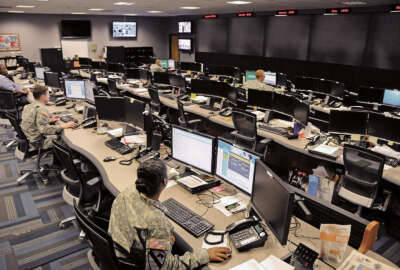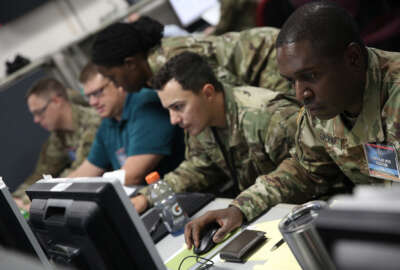Army needs flexible contracting to deliver its network
"We have got to build flexibility into our programs so that commander doesn't have to make static decisions," said Mark Kitz.
The 101st Airborne Division recently conducted an air assault exercise at Fort Campbell, Ky., leveraging unclassified network infrastructure instead of the traditionally secure SIPRNet, which handles secret classified information.
“What we learned is there are some advantages and some disadvantages,” Mark Kitz, chief of the Army’s program executive office for command, control and communications-tactical, said during the AFCEA Belvoir Industry Days event Wednesday.
In this scenario, commanders need to understand the operational risks when deploying different network options and the trade-offs associated with those choices. That includes potential exposure to location data or voice data and identifying which data is more perishable and which is less vulnerable.
The Army, Kitz said, needs to create a flexible network environment for those commanders to meet their operational needs instead of providing a one-size-fits-all solution.
“I firmly believe that the way we enable that commander is by providing options for that commander. If the commander wants to employ SIPRNet, he should have the opportunity to do that. If the commander wants to go unclassified across his whole formation, we should be able to provide him an opportunity to do that. And we should be doing that in a way that he understands trades,” said Kitz.
“I think that’s one of the real lessons of Ukraine. Everybody thought it was going to be one type of fight, then it wasn’t, then it evolved to another type of fight. GPS got jammed like crazy. Then everybody learned where those jammers are — now I can target GPS jamming. And that spectral environment has evolved over the last two years just in that one specific domain — really important domain.”
To provide this flexibility where commanders don’t have to make these rigid decisions, the Army needs to build flexibility into its programs, said Kitz.
Kitz, who leads the Army’s program executive office for command, control, communications-tactical (PEO C3T), was charged with modernizing the service’s enterprise and tactical networks and bringing modernized network communications gear to its soldiers.
The service’s program executive offices in charge of modernizing its networks recently went through some organizational changes. PEO C3T absorbed PEO enterprise information systems’ integrated enterprise network (IEN) portfolio, tasked with providing tactical and emergency communications worldwide.
The office will undergo more organizational changes over the summer, according to Kitz. But there are some changes happening right now — Brig. Gen. Camilla White, who currently serves as the deputy, will depart from her role in two weeks. Col. Kevin Chaney is stepping in to take over her position.
“We have 14 different command changes across the organization. It’s quite a bit. Over the next few months, we’ll be engaging with industry on who’s who at PEO C3T,” said Kitz.
One of the main goals for Kitz since taking over the office has been delivering a network to soldiers that is adaptable and flexible, which means that the office’s portfolios need to adjust in order to deliver those capabilities.
“This is important because the network of today is not going to work, it’s not going to be the network of three years from now. But I’m going to engage with industry on a five-year contract because that’s how we do things,” said Kitz.
“How do I engage with industry on a contract that can be more dynamic and more flexible so as my commanders are going into a fight, they can go with a network that they need, that can be on demand, rather than the network I gave them three years ago.”
The service has adjusted the way it acquires capabilities in some instances. A couple of years ago, the service adopted an approach where it would buy capabilities for its tactical network in tranches rather than purchasing everything at once.
“That’s really what I think agile does for us in the government — these agile acquisition programs can more directly tie commander needs to how we build our programs,” said Kitz.
Copyright © 2025 Federal News Network. All rights reserved. This website is not intended for users located within the European Economic Area.






